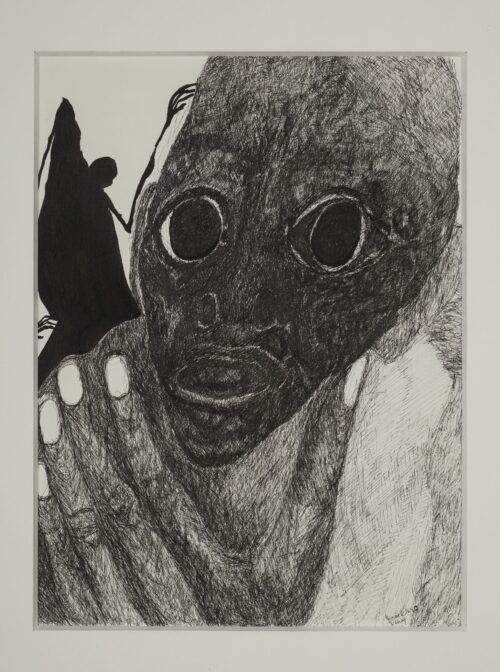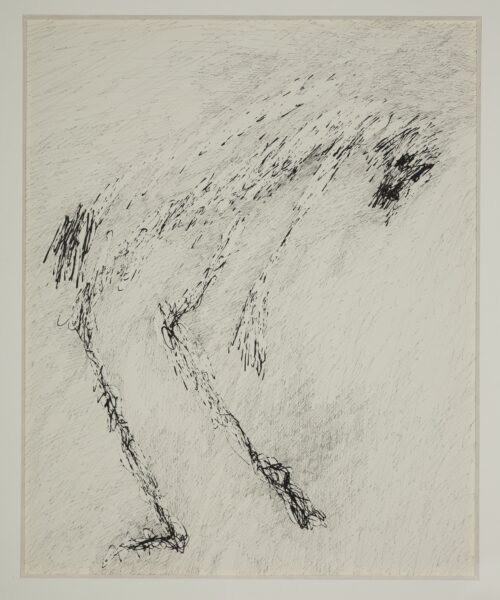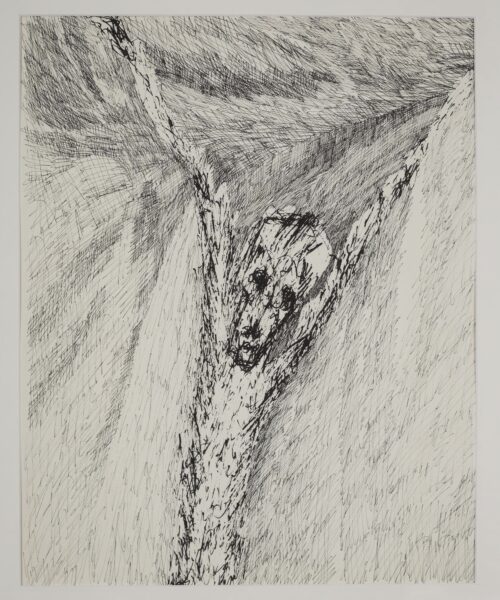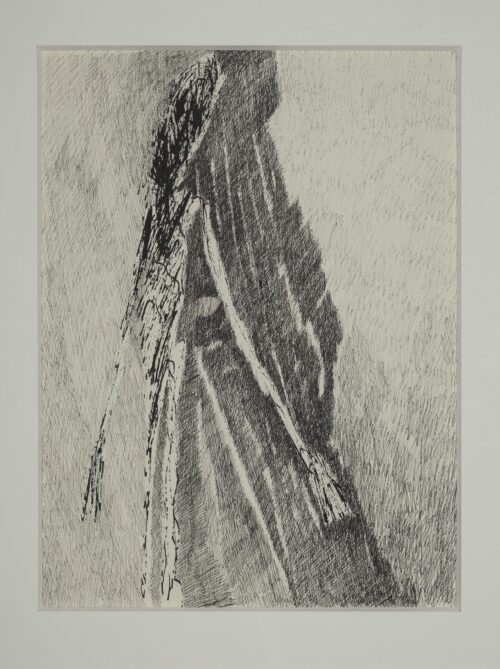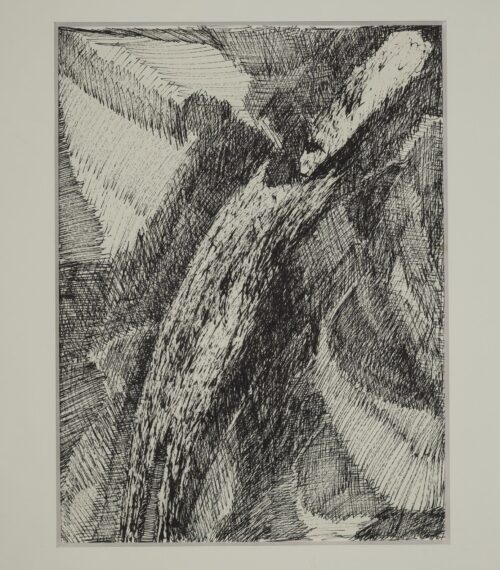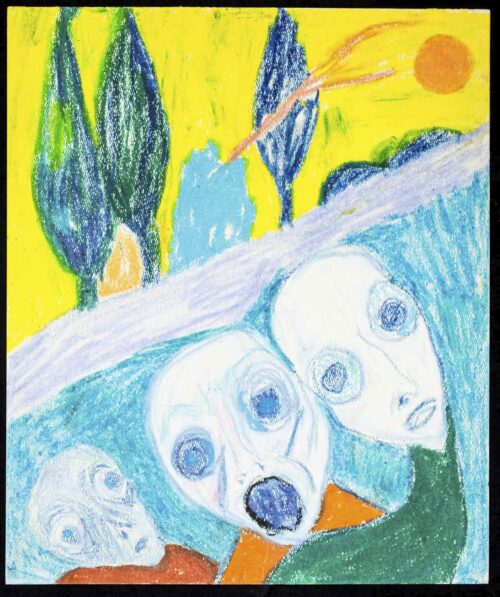Rosemarie Koczÿ (1939 – 2007) est née à Recklinghausen, en Allemagne, dans une une famille d’origine juive hongroise. En 1942, elle est déportée avec les siens dans un camp de concentration. Libérée en 1945, elle est élevée par ses grands-parents jusqu’au décès de sa grand-mère, puis placée dans un orphelinat, avant de s’installer en Suisse en 1961. Rosemarie Koczÿ y suit des cours à l’école des arts décoratifs de Genève. Elle commence à s’intéresser à la tapisserie et entreprend des recherches en ethnologie sur des techniques textiles primitives d’Afrique et d’Océanie. Tout en poursuivant ses études, elle peint, dessine et réalise des ouvrages textiles.
Dès 1970, elle initie une série ininterrompue de dessins à l’encre de Chine, intitulée « Je vous tisse un linceul ». Ces œuvres sont dédiées aux victimes de la Shoah à qui elle offre par ce biais une cérémonie funéraire symbolique. Dans le rituel d’enterrement juif, le corps est lavé avant d’être entouré d’un linceul cousu, en signe de respect. En référence à ce geste, l’autrice trace des traits tenus autour de figures évoquant des corps nus. Parallèlement à sa création picturale, Rosemarie Koczÿ a publié de nombreux récits sur l’histoire de sa famille. En 1984, elle émigre aux États-Unis où elle demeure jusqu’à son décès.
Rosemarie Koczÿ (1939 – 2007) was born in Recklinghausen, Germany, into a family of Hungarian Jewish origin. In 1942, she was deported with her family to a concentration camp. Released in 1945, she was raised by her grandparents until the death of her grandmother, then placed in an orphanage, before settling in Switzerland in 1961. Rosemarie Koczÿ took classes at the arts school there. decorative objects from Geneva. She began to take an interest in tapestry and undertook ethnological research on primitive textile techniques from Africa and Oceania. While continuing her studies, she painted, drew and created textile works.
In 1970, she initiated an uninterrupted series of Indian ink drawings, entitled “I weave you a shroud”. These works are dedicated to the victims of the Shoah to whom it offers a symbolic funeral ceremony. In the Jewish burial ritual, the body is washed before being surrounded by a sewn shroud, as a sign of respect. In reference to this gesture, the author draws lines held around figures evoking naked bodies. Alongside her pictorial creation, Rosemarie Koczÿ published numerous stories about the history of her family. In 1984, she emigrated to the United States where she remained until her death.
